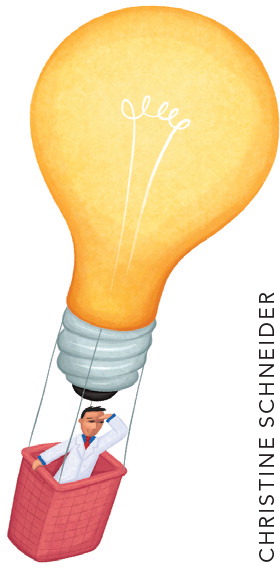
Our collective advocacy can instill hope and prevent burnout.
Fam Pract Manag. 2017;24(2):42
Author disclosure: no financial affiliations disclosed.

An estimated 63 percent of family physicians meet the criteria for burnout.1 I am not one of them. Five former partners and two solo colleagues with whom I shared call burned out and moved on to salaried jobs or retired early. But in my 42nd year of practice, I still find joy in going to my office. Why? It's not the enduring relationships with four generations of families; it's not the intimacy and trust I experience in the lives of my patients; and it's not the gratitude from patients who feel well served. My former colleagues had all of these rewards as well, but they were not adequate to prevent an exit from private practice.
I believe three additional factors have sustained me.
1. My wife of 51 years was raised in a home where her father was a general practitioner (GP) with an office in the home. She was immersed in his mission, and shares mine.
2. I share the office with a physician assistant in her 27th year of practice. Her joy and enthusiasm sustain mine.
3. I have experienced the power of collective advocacy, which gives me hope for our profession. Let me explain:
When I was in medical school, my father-in-law counseled me, “Don't become a GP,” because of the indignities he had suffered from his colleagues and patients. I didn't listen. Thirty years later, when I was honored as Family Doctor of the Year by the New York State Academy of Family Physicians, I reflected on how a career that had so disappointed my father-in-law had become so satisfying to me. What made the difference, I believe, was the advocacy of our Academy, with the rigor of our Board.
That day, I attended my first state Congress of Delegates. The delegates to our state Congress were passionate, altruistic, articulate, and tolerant. They inspired me to become more involved. Years later, as president of our state Academy, I experienced the national American Academy of Family Physicians Congress of Delegates, where our colleagues gather to formulate policy for national advocacy.
All family physicians benefit from this advocacy, but active participants benefit most. Representing our state Academy has given me access to our state health department commissioner, the chairs of our senate and assembly health committees, the secretary of our state board of medicine, and more. Being in the room with such leaders and having them listen and take notes has proven to me that we are not powerless victims.
Advocacy requires patience. For example, it took more than a decade to accomplish state legislative relief for health care workers exposed to potential HIV infection. Advocacy requires collaboration with our colleagues in other specialties, our state medical society, and other special interest and patient advocacy groups. Such collaboration resulted in the legalization of treating the absent partner when a patient presents alone for the care of a sexually transmitted disease. Advocacy requires compromise. We had a several-year debate across medical specialties about medical marijuana, which required concessions by all parties. Advocacy requires discomfort. We have to consider policies even though they are controversial or divisive if we are to remain relevant. Finally, advocacy requires the involvement of our youth if we are to have a future.
Physician burnout is attributed to feelings of helplessness and loss of control, among other factors. Although we are burdened with high liability, low payment, and oppressive regulation, we cannot withdraw or retreat. Exercising our collective power can effect change and immunize us against burnout. To get involved, visit the AAFP web site.
